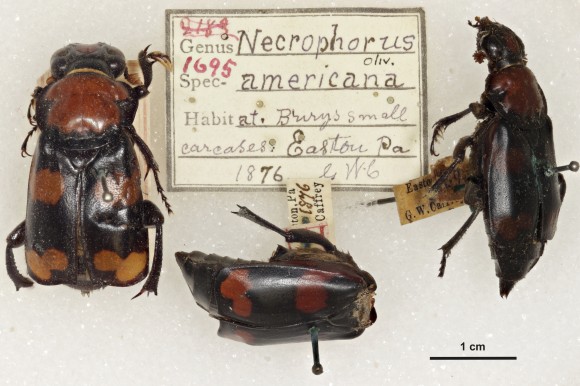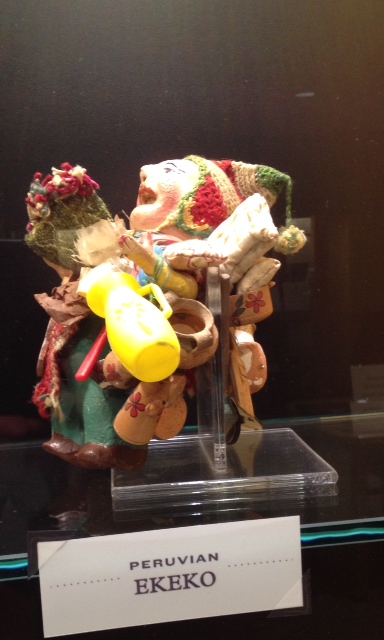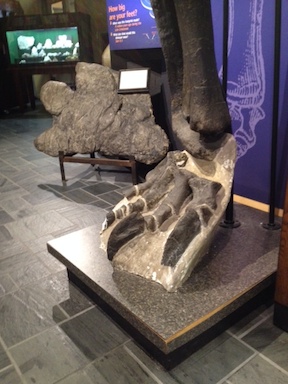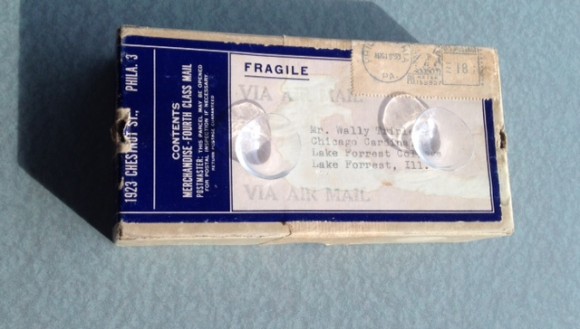Penn State’s museums are full of the majestic, the sublime, and the awe-inspiring. There, on display for all of us to see, are artifacts of science and objects of art that remind us of humanity’s ability to turn skill and knowledge into things of beauty and understanding.
These museums are also filled with something else that, for the most part, only human beings can produce and that, without a doubt, only human beings can appreciate: the really, really weird.
Just in time for Halloween, I’d like to take us on a trip to some of Penn State’s museums and find the best examples of Weird Penn State. As turns out, finding the really, really weird is really, really easy.
We’ll start our weird adventures at the Palmer Museum of Art, Penn State’s premier arts resource for the University and surrounding area.
Eat Your Art Out, Hannibal Lecter
I really love still life. Is there anything more soothing than standing in the Palmer, your head cocked slightly, and looking upon a painting of a nicely set table dappled with muted, stoic light? Maybe add some antique bottles to give it that natural everyday life kind-of-look. Oh, and why not throw in a head?
At the Palmer Museum of Art, located on Curtin Road, you can gaze on a number of masterpieces; some are still life. At least one is a mixture of still life and still death. The unsettling image of San Gennaro is a painting by Flemish artist, Louis Finson, who created the piece — or maybe pieces — around 1610. The painting features San Gennaro, the patron saint of Naples, and an unidentified severed head.

There is a lot of speculation on who had the head that — until rather recently — sat at the top of his shoulders. He may have been someone who spoke against the church, or possibly a scientist. The work has also been interpreted as an artistic demonstration of the power of the Church. Whatever the interpretation, the expression on the bishop’s face and the position of hands is pretty clear: “Don’t. Mess. With. Me. And don’t arrive late at my dinner parties, either.”
Wonder what type of wine you serve with severed head?
I Like Big Bugs And I Can Not Lie…
The bishop had an extra head. Some of the bugs at the Frost Entomological Museum don’t have any at all. The museum, which has thousands and thousands of bugs on display that range from the creepy crawly to the exquisitely aerodynamic, has one sample that is particularly weird — and that is saying something considering the source.

The folks who started the museum obviously had an eye for the curious, which is the politically correct term for “weird,” because the museum’s oldest specimen is an American burying beetle (Nicrophorus Americana), added back in 1876. The beetle is also called the giant carrion beetle because 1) it uses carcasses for breeding purposes (Trust me, it’s a long story) and 2) what entomologist wouldn’t love a big bug that buries corpses?
This beetle buries itself during winter, then finds a carcass before it mates. Sometimes, there are huge battles over a really good carcass. The biggest, baddest male and female beetles win and get to breed, thus proving Darwin’s adage that survival tends to go to the weirdest.
Frost Entomological Museum is also located on Curtin Road. Here’s the museum curators’ really cool blog, too.
Oh The (Weird) Humanity!
People are a little weird. Anthropology is the study of people and cultures. Therefore, if the logic follows, an anthropology museum should be full of weird, strange and utterly fascinating things.
If you want proof, head to the Matson Museum of Anthropology located in the Carpenter Building on the University Park campus. Since the mid-1960s, the Matson has inspired students, faculty and the public to study the diversity — and the similarity — of humanity. It’s inspired me to show humanity’s diverse — yet similar — affinity for weirdness.
One objet bizarre (note to editor: that’s intentionally French) at the museum is this little Peruvian guy, or god. Ekeko is a figurine based on an ancient god of prosperity from the Andean region of Bolivia, who helps fulfill wishes. Apparently, he’s a bit like Santa Claus, but with a colorful poncho, instead of a white fur-trimmed red coat. Instead of crawling up into Santa’s lap, people place a miniature version of what they want in the coming year on Ekeko’s lap.

At one time, people placed food and money in the god’s lap. Now, they want Ekeko to bring them cell phones and other modern objects. I wonder if the folks at the Matson Museum of Anthropology will let me place a few figures of Big Ten referees with 20/20 vision in Ekeko’s lap for Coach Franklin? Hey, it’s worth a shot.
Just a note: The museum has lots of other examples of humanity’s weirdness, but those objects should really be seen in person and not blogged about in a post that can easily be traced back to me. (Psst. E-mail me…)
Penn State And The Vision Thing
Often a player will rise to such a high level of skill that fans will refer to him or her as “a man among boys” or “a woman among girls.” The Penn State All-Sports Museum is full of artifacts and memorabilia of the University’s long legacy of producing players of such skill and acumen.
One of those greats is definitely Wallace “Wally” Triplett. But the speedster from La Mott, Pennsylvania, taught us more than how a man performs on the field, he and his teammates taught us how humans behave in life.
Triplett and Dennie Hoggard were the first African-Americans to play in a Penn State varsity football game. In 1946, when the University of Miami requested that Penn State’s black players not travel to play in the game, the team voted to cancel that regular-season game.
When the issue arose again before the team’s pending 1948 Cotton Bowl match-up against Southern Methodist University, the team made it clear: there may be no “I” in team, but, according to the Penn State spelling, there is definitely a “we” in the word.
Triplett, who also co-founded the Gamma Nu chapter of Alpha Phi Alpha, went on to play in that game — the first African-American to play in the Cotton Bowl Classic — and scored the tying touchdown for the game’s final 13-13 score.
So where’s the weird?
Long before the Civil Rights movement, Triplett and Penn State students showed they had vision. Ironically, Triplett needed a little help with his actual vision. As he zig-zagged across the field and carved defenses up like a dining hall roast beef for the Nittany Lions, Triplett needed to wear glasses. Later, when Triplett played in the NFL, he switched to contact lenses. Hard lenses. Ouch. The Sports Museum still has the pair of the lenses that he wore as a professional football player. They are not regularly on display, but I got a shot of them.
Some more stats about Triplett and his pioneering career: He was only the third African-American chosen in NFL Draft and first of the draftees to take the field in a league game.
B.F.O.C. — Big Feet on Campus
Has there ever been a Bigfoot sighting on campus? Not to my knowledge.
Has there ever been a Bigfeet sighting on campus? You betcha. Just go to the EMS Museum and Art Gallery in the Deike Building. The museum features two Ginormousaurus Rex (not a real scientific classification, but should be) feet, one belonging to a Diplodocus and the other, a footprint belonging to a Hadrosaur.

If the Diplodocus, who was probably weighing in at about 24.6 tons and towering about 25 feet in the air, wanted to strap on some shoes, he — or she — would probably need a size 72.5, or, possibly the dino could just borrow a pair of shoes from an offensive lineman.
Fortunately, this dinosaur, which stomped through the western United States about 75 million years ago, only ate plants. The same can not always be said about the aforementioned offensive linemen.
The Hadrosaur was a duck-billed dinosaur. This particular specimen — that’s what all the fancy dinosaur scientists say — had a 12-foot stride and a trackway — that’s a fancy dinosaur scientist word for footprint — of approximately 3.75 feet.
Apologies
Unfortunately, I did not get to the Pasto Agricultural Museum, the College of Agricultural Sciences museum in Rock Springs. Hopefully, I can make it out there soon to find something weird.
I mean, the museum holds, “approximately 1,300 rare and unusual farm and household items dating from 4,000 BC to the 1940s or more than 6,000 years.” In 6,000 years, I bet farmers came up with a whole lot of weird.
Sounds like another edition of Weird Penn State!

